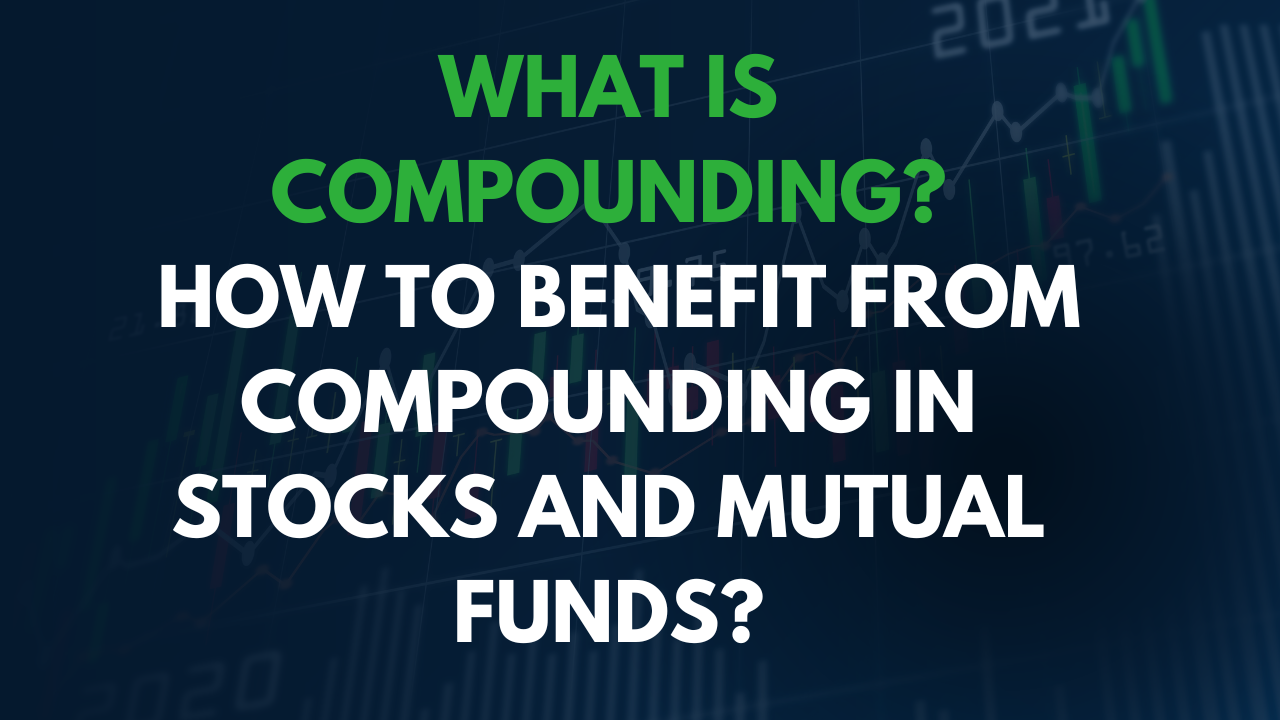Compounding refers to the process of earning returns on both the initial investment and the accumulated earnings over time. In the context of stocks and mutual funds, compounding can significantly enhance investment growth. To benefit from compounding, it’s important to start investing early and consistently. Reinvesting dividends and capital gains can accelerate the compounding effect. Additionally, choosing investments with a long-term perspective and staying invested for an extended period allows compounding to work its magic and potentially generate substantial returns over time.
Understanding Compounding: The Basics
Compounding is a fundamental concept in finance that refers to the process of earning returns not only on the initial investment but also on the accumulated earnings over time. It can have a significant impact on wealth accumulation and is commonly associated with long-term investments such as stocks and mutual funds.
At its core, compounding allows your investment to generate returns, and those returns, in turn, generate more returns. Over time, this compounding effect can lead to exponential growth in your investment value.
The key to understanding compounding lies in the concept of reinvestment. Instead of withdrawing the returns earned, you reinvest them back into the investment. As a result, your investment base grows, and the potential for earning returns on a larger principal amount increases.
Starting Early and Consistent Investing
One of the key factors in benefiting from compounding in stocks and mutual funds is starting your investment journey as early as possible and maintaining a consistent approach.
Starting early allows you to take advantage of the power of compounding over a longer period. Even small amounts invested regularly can grow significantly over time due to the compounding effect. By giving your investments more time to compound, you increase the potential for greater returns in the future.
In summary, starting early and maintaining a consistent investment approach are essential for benefiting from compounding in stocks and mutual funds. By doing so, you can harness the full potential of compounding and increase the likelihood of achieving your long-term financial goals.
Reinvesting Dividends and Capital Gains
Reinvesting dividends and capital gains is a powerful strategy to maximize the benefits of compounding in stocks and mutual funds. Instead of taking these distributions as cash payouts, you choose to reinvest them back into your investment.
Dividends are periodic payments made by companies to their shareholders as a portion of their profits. When you reinvest dividends, they are used to purchase additional shares of the same stock or mutual fund. This increases your ownership in the investment, leading to a larger dividend payout in the future. By reinvesting dividends, you effectively compound your returns, allowing your investment to grow more rapidly over time.
Similarly, capital gains occur when you sell an investment for a profit. Instead of withdrawing these gains, you can reinvest them back into the same investment or allocate them to other opportunities. Reinvesting capital gains allows you to capitalize on the compounding effect, as the gains become part of your principal balance, potentially leading to higher returns in the future.
Long-Term Perspective: Allowing Compounding to Work
A crucial aspect of benefiting from compounding in stocks and mutual funds is maintaining a long-term perspective. Compounding is most effective when given sufficient time to work its magic.
Investing with a long-term view means resisting the temptation to constantly buy and sell based on short-term market fluctuations. Instead, focus on the growth potential of your investments over an extended period. By staying invested for the long haul, you provide ample time for compounding to generate substantial returns.
The power of compounding becomes increasingly evident over time. Initially, the growth may seem modest, but as the years go by, the compounding effect becomes more pronounced. By reinvesting returns and allowing them to compound, your investment base expands, leading to accelerated growth in the future.
Benefits of Compounding in Stocks and Mutual Funds
1. Exponential Growth: Compounding allows your investments in stocks and mutual funds to grow exponentially over time. As you reinvest your earnings, your investment base increases, leading to larger returns in subsequent periods. This compounding effect can result in significant wealth accumulation over the long term.
2. Wealth Accumulation: By harnessing the power of compounding, you have the opportunity to accumulate substantial wealth. The longer your investment horizon, the more time compounding has to work its magic and generate impressive returns. Consistent contributions and reinvestment of earnings can lead to a compounding snowball effect, significantly boosting your investment value.
3. Time as an Ally: Compounding rewards those who start investing early. By beginning your investment journey sooner rather than later, you give your investments more time to compound. This time advantage allows you to potentially achieve your financial goals with a lower total investment amount, as the compounding effect does much of the work for you.
4. Mitigating Inflation: Inflation erodes the purchasing power of money over time. Compounding in stocks and mutual funds can help combat the effects of inflation by providing returns that outpace inflation rates. By earning returns above the inflation rate, you maintain the value of your investment and potentially increase your real purchasing power.
Overall, the benefits of compounding in stocks and mutual funds are immense. Through consistent contributions, reinvestment of earnings, and a long-term perspective, you can harness the power of compounding to build wealth, generate passive income, and increase your chances of achieving financial success.
Also Read:
- Investment Taxation: Understanding Capital Gains, Dividends, and More
- The Impact Of Inflation On Investments
- What is the safest way to reduce investment risk?
- What are the major four assets of an investor portfolio?




